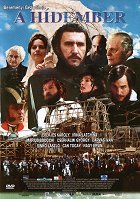Reżyseria:
Géza BereményiScenariusz:
Géza BereményiZdjęcia:
Sándor KardosObsada:
Károly Eperjes, Ervin Nagy, György Cserhalmi, Tibor Gáspár, Dezső Garas, Attila Kaszás, Viktor Bodó, Sándor Badár, Melinda Major, Orsolya Tóth (więcej)Opisy(1)
In September 1848 Count István Széchenyi is transported to the mental asylum of Döbling. His life is recalled. After the wanton years of his youth, on travelling to England he becomes aware of the backwardness of his country, and his father's farewell letter confronts him with his life up to then. Inspired by Crescence, and subsequently by Baron Wesselényi, he enters the strife for reforms, and becomes more and more popular. He participates in the first Hungarian government. Taken aback by the revolutionary crowds and the accident at the building of the Chain Bridge, he breaks down. After the defeat of the war of liberty he lives in apathy at Döbling. When he recovers, he becomes a chess-maniac. In 1860, the anti-Habsburg leaflets published in London arouse suspicions of his being involved. At Easter he is found dead, with his gun on his knees. In spite of the ban, huge crowds follow him on his last journey. (Mokép)
(więcej)